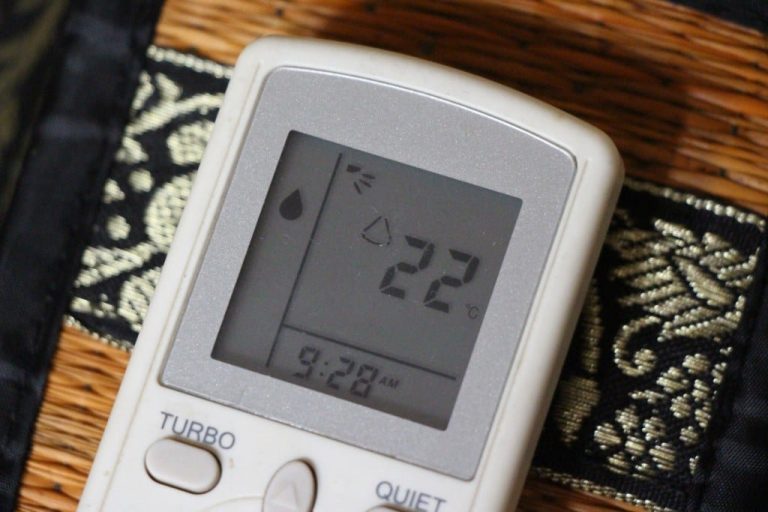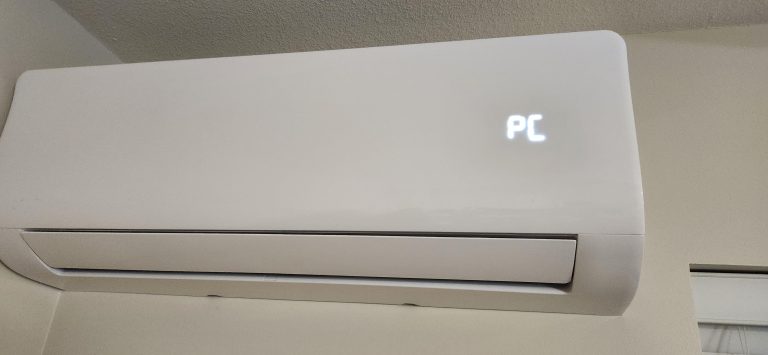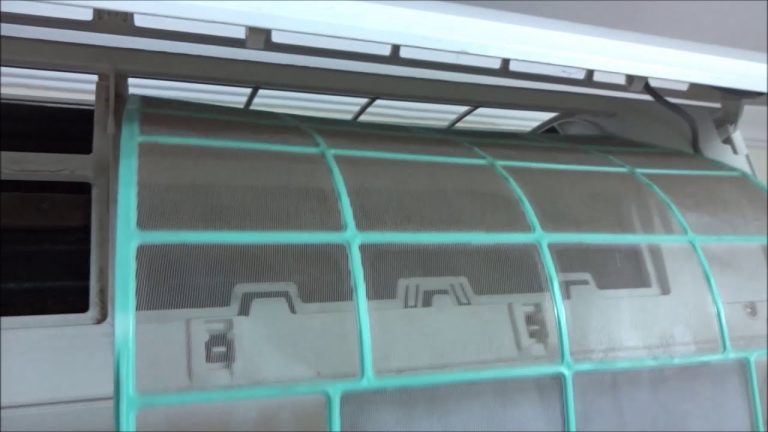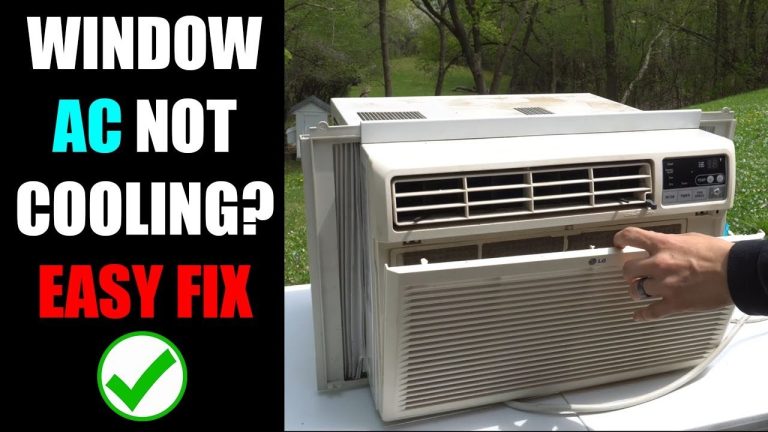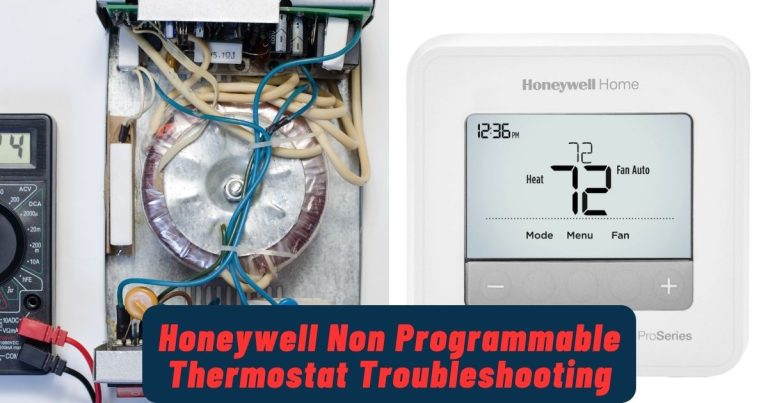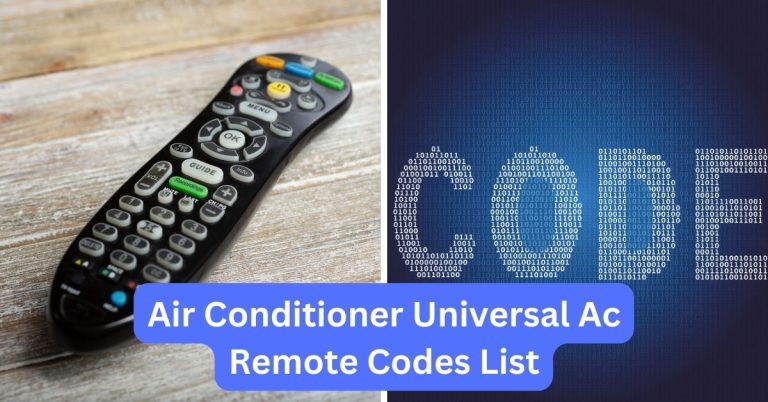Fix A Frozen Ac Unit: Easy Step-By-Step Guide For Quick Solutions
To fix a frozen AC unit, follow these steps: 1. Turn off the AC: Shut off the unit to prevent further damage. 2. Check for airflow restrictions: Clear any debris or obstructions around the unit. 3. Change the air filter: A dirty filter can restrict airflow and cause freezing. 4. Thaw the unit: Allow the ice to melt completely before proceeding. 5. Inspect the refrigerant levels: Low refrigerant can lead to freezing; contact a professional if levels are low. 6. Clean the coils: Dirty coils can impede airflow; gently clean them using a soft brush or vacuum. 7. Test the fan motor: Ensure the fan is running smoothly; lubricate if necessary. 8. Call a professional: If the issue persists or you’re uncomfortable with DIY repairs, consult an HVAC technician. By following these steps, you can restore your AC unit’s functionality and enjoy a cool and comfortable home once again.
Did you know that a frozen AC unit can turn your indoor oasis into an icy nightmare? Picture this: it’s a scorching hot day, and you eagerly step into your home, expecting cool, refreshing air to greet you. But instead, you find yourself standing in front of a block of ice, desperately yearning for relief.
If you’re a homeowner or renter with a central air conditioning system, you understand the frustration and discomfort that a frozen AC unit can bring. Not only does it hinder your ability to maintain a comfortable indoor environment, but it can also lead to higher energy bills and potential damage to your HVAC system.
But fear not! In this easy step-by-step guide, we’ll empower you with the knowledge to troubleshoot and fix a frozen AC unit in no time. Say goodbye to the inconvenience and expense of calling in professionals, because with our comprehensive instructions, you’ll be able to restore your AC unit’s functionality and enjoy a cool and comfortable home once again. So, let’s dive into the essential tips and techniques that will help you conquer the frozen AC unit dilemma with ease.
Get ready to take charge of your indoor climate control and reclaim your sanctuary from the clutches of icy despair.
- Seals metal leaks in condensers, evaporators, accumulators, receiver and driers
- Seals rubber leaks in hoses O-rings and gaskets
- Comes with recharge hose
- Safe for all R-134a systems
- Professional grade
- [All In One] R-134a Refrigerant, lubricant enhancer and ac leak sealer, all in one! This powerful ac refrigerant kit can provide effective cooling, extend system life, and stop some small leaks. Complies with Section 612 of the EPA Clean Air Act. Hose and wireless digital temperature sensor are reusable.
- [Charge More Accurately] Our r134a refrigerant recharge kit use precision technology to measure the air temperature of the vent instead of measuring system pressure, which is more intuitive and accurate to avoid charging failure due to different system pressures between vehicles.
- [Upgrade Digital Temperature Indicator] Get rid of the dial, our freon 134a refrigerant using the latest wireless digital temperature display. Just observe the temperature of the number, you can know whether to complete charging! More simple and safety!
- [Do It Yourself] No more time and high costs to the mechanic, you can do it yourself and get your car’s air conditioner back to cooling easily! This r134a car ac recharge kit is acceptable for use in motor vehicle A/C (MVAC) system, and not compatible with r1234yf systems. Please confirm your correct system type.
- [Notes & After-Sales] Customer should complying with all federal, state and local regulations when purchasing, handling, storing and installing refrigerants. For safe use, please follow all safety precautions when handling. After-sales is guaranteed, if you have any questions please feel free to contact us.
- This is for MVAC use and comes in 12-Ounce Self-Sealing Container.
- This echarge refill protects against extreme temperatures and high use.
- It is formulated with 2 times the cooling boosters compared the next leading brand.
- Revives rubber components and helps to protect and extend the life of your vehicles AC system.
- UNIVERSAL – ZeroR AC Refrigerant is a hydrocarbon that safely bonds with chemicals like R134a, R1234YF and R12. We can only advertise this product to be used in R134a systems due to EPA regulations in the USA on both R12 and R1234YF systems. EPA also prohibits mixing refrigerant types. See the description for all legal disclaimers.
- EASY – This product installs just as easily as any R134a products. Cans even have R134a threads and the majority of R134a can taps will work for these cans.
- 6oz CANS – Refrigerants are compressed gasses and are measured by weight, not by liquid volume such as water. All gasses compress differently and produce a different weight. ZeroR AC Refrigerant is low weight compared to R134a, but its performance is equal to 16oz of R134a.
- ECO FRIENDLY – ZeroR AC Refrigerant is a 100% Natural gas unlike R134a, R1234yf and R12.
- SAFE – ZeroR AC Refrigerant has a class 2.1 flammability rating just like the new R1234YF which is now used in 100% of newly manufactured vehicles. Under normal operating conditions this product presents no danger to its users when handled properly and used in systems approved for flammable refrigerants.
- UNIVERSAL – ZeroR AC Refrigerant is a hydrocarbon that safely bonds with chemicals like R134a, R1234YF and R12. We can only advertise this product to be used in R134a systems due to EPA regulations in the USA on both R12 and R1234YF systems. EPA also prohibits mixing refrigerant types. See the description for all legal disclaimers.
- EASY – This product installs just as easily as any R134a products. Cans even have R134a threads and the majority of R134a can taps will work for these cans.
- 6oz CANS – Refrigerants are compressed gasses and are measured by weight, not by liquid volume such as water. All gasses compress differently and produce a different weight. ZeroR AC Refrigerant is low weight compared to R134a, but its performance is equal to 16oz of R134a.
- ECO FRIENDLY – ZeroR AC Refrigerant is a 100% Natural gas unlike R134a, R1234yf and R12.
- SAFE – ZeroR AC Refrigerant has a class 2.1 flammability rating just like the new R1234YF which is now used in 100% of newly manufactured vehicles. Under normal operating conditions this product presents no danger to its users when handled properly and used in systems approved for flammable refrigerants.
- Smart Clip Technology – easy to use vent clips change to blue and green to show correct refrigerant charge and to prevent overcharging; No gauge required
- Black Diamond Avalanche Super Chill formula replaces lost refrigerant and oil; The ultra-synthetic formula provides maximum cooling and extends the life of your system
- Stop leaks – system safe chemical additive stops leaks in O-rings and other rubber components where most common leaks begin
- Smart Clip Technology – easy to use vent clips change to blue and green to show correct refrigerant charge and to prevent overcharging; No gauge required
- Replaces lost R-134a refrigerant and oil in automotive A/C system
- System safe stop leak sealer stops most common A/C leaks with hoses, gaskets and O-Rings
- Special anti-wear additives extend system life and improve performance
- Contains R-134a gas which is acceptable for use in motor vehicle A/C (MVAC) systems
- Complies with Section 612 of the EPA Clean Air Act, EPA Compliant in Self Sealing Cans
- GET COLD AIR IN MINUTES with this r134a car air conditioner revitalizer – Avoid the inconvenience, high costs, and loss of transportation of a repair at the dealer or mechanic. Manufactured in the USA.
- WIRELESS DIGITAL THERMOMETER AND DISPLAY makes recharging your car simple and fast – You don’t have to be an A/C pro to safely use our car air conditioner recharge kit at home.
- THE MR FREEZE DIFFERENCE – Mr. Freeze uses Accufill technology to measure the air temperature coming from your vents and not the pressure of your system, which can differ from vehicle to vehicle. Simply fill your system until you reach the target temperature using our easy to follow how-to instructions.
- R134A RECHARGER, LUBRICANT, AND LEAK SEALER, ALL IN ONE – Mr. Freeze Air Conditioner Revitalizer contains R134A refrigerant. R134A gas is acceptable for use in motor vehicle A/C (MVAC) system for small leaks. This product does not fit R1234YF systems.
- EPA COMPLIANT SELF SEALING CANS- Our product complies with Section 612 of the EPA Clean Air Act.
- Reusable R-134a gauge & hose
- Trigger dispenser for effortless recharging
- Gauge displays pressure reading for accurate fill
- 90 degree coupler for ports in tight positions
- Designed for compliance and to work only with R-134a cans with self-sealing valve can tops
- Replaces lost R-134a refrigerant and oil in automotive A/C system; ACME threaded top; Recharging hose sold separately
- System-safe leak sealer additive seals common A/C leaks in rubber hoses, gaskets, and O-rings
- Formulated with advanced QwikBoost chemistry for colder air up to 50% faster and eliminate moisture buildup
- Contains R-134a gas which is acceptable for use in motor vehicle A/C (MVAC) systems
- Complies with Section 612 of the EPA Clean Air Act, EPA Compliant in Self Sealing Cans
I. Understanding a Frozen AC Unit
A. What causes an AC unit to freeze
Before diving into the steps to fix a frozen AC unit, it’s important to understand what causes this issue in the first place. Several factors can contribute to an AC unit freezing up, including:
- Lack of proper airflow
- Insufficient refrigerant levels
- Dirty condenser coils
- Faulty thermostats
B. Signs of a frozen AC unit
Spotting the signs of a frozen AC unit early on can help prevent further damage and ensure a timely fix. Here are some common indicators to look out for:
- Warm air blowing from vents
- Icy buildup on the unit or refrigerant lines
- Reduced or no airflow
- Unusual hissing or gurgling sounds
II. Diagnosing the Problem
A. Checking for airflow issues
One of the most common causes of a frozen AC unit is restricted airflow. Let’s explore some possible culprits:
1. Blocked or dirty air filters
Clogged air filters restrict airflow, causing the evaporator coil to freeze. Check your air filters and clean or replace them if necessary.
2. Obstructed vents or registers
Ensure that all vents and registers are free from any blockages such as furniture, curtains, or dust. Clear any obstructions to allow proper air circulation.
3. Closed or blocked return air grilles
Check if the return air grilles, which allow air to flow into the AC system, are closed or obstructed. Open them up or remove any blockages to improve airflow.
B. Inspecting the refrigerant levels
Insufficient refrigerant levels can also lead to an AC unit freezing up. Consider the following possibilities:
1. Low refrigerant levels
If your AC unit is low on refrigerant, it may not be able to absorb enough heat, causing the evaporator coil to freeze. Consult a professional HVAC technician to recharge the refrigerant.
2. Refrigerant leaks
A refrigerant leak can disrupt the proper flow of refrigerant, resulting in freezing. If you suspect a leak, it’s crucial to contact a professional to locate and repair it.
C. Examining the condenser unit
The condenser unit plays a vital role in the cooling process. Here are two components to inspect:
1. Dirty or clogged condenser coils
Over time, dirt and debris can accumulate on the condenser coils, hindering heat transfer and causing the unit to freeze. Cleaning the coils can resolve this issue.
2. Malfunctioning fan or motor
A malfunctioning fan or motor can disrupt the airflow, leading to freezing. Check if the fan blades are spinning properly and if the motor is functioning as intended.
D. Assessing the thermostat settings
The thermostat controls the temperature settings in your home. Here are two thermostat-related issues to consider:
1. Incorrect temperature settings
Ensure that the thermostat is set to the appropriate temperature. If it’s set too low, it may cause the system to run excessively and lead to freezing.
2. Faulty thermostat
A faulty thermostat can send incorrect signals to the AC unit, causing it to freeze. If you suspect a malfunctioning thermostat, consider replacing it or consulting a professional for repairs.
III. Steps to Fix a Frozen AC Unit
A. Turn off the AC system
When dealing with a frozen AC unit, it’s crucial to turn off the system to prevent further damage. Follow these steps:
1. Shutting off the thermostat
Set the thermostat to the “off” position to stop the system from running.
2. Cutting off the power at the breaker box
Locate the circuit breaker that controls the AC unit and switch it off to cut off the power supply.
B. Thawing the frozen unit
Now that the AC system is powered off, it’s time to thaw the frozen unit. Follow these steps:
1. Switching the fan to “on” mode
Set the fan to the “on” mode to circulate warm air and speed up the thawing process.
2. Placing towels or a pan under the unit
To catch any water as the ice melts, place towels or a pan underneath the AC unit.
3. Using a hairdryer or gentle heat source
Gently warm the frozen components using a hairdryer on the lowest heat setting or another gentle heat source. Be cautious not to overheat any parts.
C. Cleaning or replacing air filters
After the unit has thawed, it’s time to address any airflow issues. Consider the following steps:
1. Removing and cleaning reusable filters
If you have reusable air filters, remove them and clean them according to the manufacturer’s instructions. Allow them to dry completely before reinserting them.
2. Replacing disposable filters
If you have disposable air filters, remove the old filters and replace them with new ones. Make sure to choose the correct size and type for your AC unit.
D. Clearing obstructions
To ensure proper airflow, it’s important to clear any obstructions in the system. Follow these steps:
1. Removing any objects blocking vents or registers
Check all vents and registers for any objects that may be obstructing the airflow. Remove any obstructions to allow unrestricted air circulation.
2. Ensuring proper air circulation
Arrange furniture and other items in the room to ensure proper air circulation and prevent any obstacles to the airflow.
E. Inspecting and cleaning condenser coils
Dirty condenser coils can impede heat transfer and lead to freezing. Take the following steps to clean them:
1. Removing debris and dirt from the coils
Carefully remove any debris, leaves, or dirt from the condenser coils. You can use a soft brush or a handheld vacuum with a brush attachment.
2. Using a coil cleaner if necessary
If the coils are significantly dirty, consider using a coil cleaner specifically designed for HVAC systems. Follow the manufacturer’s instructions for proper use.
F. Checking and adjusting refrigerant levels
Monitoring and adjusting refrigerant levels is crucial for proper AC unit operation. Consider the following steps:
1. Calling a professional for refrigerant leaks
If you suspect a refrigerant leak, it’s essential to contact a professional HVAC technician. They have the necessary tools and expertise to locate and repair the leak.
2. Scheduling a recharge if refrigerant levels are low
If the refrigerant levels are low, consult a professional to recharge the system to the appropriate level. A trained technician can perform this task safely and accurately.
G. Verifying proper fan and motor function
The fan and motor play a crucial role in ensuring proper airflow. Take the following steps to verify their function:
1. Cleaning and lubricating fan blades and motor bearings
Clean the fan blades and lubricate the motor bearings according to the manufacturer’s instructions. This can help ensure smooth operation and prevent future issues.
2. Replacing faulty fan or motor components
If you notice any significant issues with the fan or motor, such as unusual noises or lack of functionality, consult a professional HVAC technician for repairs or replacements.
H. Adjusting thermostat settings
Improper thermostat settings can cause the AC unit to run excessively and lead to freezing. Consider the following steps to adjust the settings:
1. Calibrating the thermostat if necessary
If you suspect that the thermostat is not displaying accurate temperatures, follow the manufacturer’s instructions to calibrate it. This ensures precise temperature control.
2. Ensuring accurate temperature readings
Regularly check the thermostat’s temperature readings against a separate thermometer. If there are significant discrepancies, it may be time to replace the thermostat.
IV. Preventing AC Unit Freezing
A. Regular maintenance
To prevent your AC unit from freezing up in the future, prioritize regular maintenance. Consider the following steps:
1. Scheduling professional AC inspections
Arrange for professional HVAC inspections at least once a year. This allows technicians to identify and address any potential issues before they escalate.
2. Cleaning or replacing air filters regularly
Clean or replace air filters according to the manufacturer’s recommendations. This ensures proper airflow and prevents debris from accumulating on the evaporator coil.
B. Airflow optimization
Optimizing airflow is crucial for preventing AC unit freezing. Consider the following steps:
1. Keeping vents and registers unblocked
Avoid placing furniture or other objects in front of vents and registers. Keep them unobstructed to allow smooth airflow throughout your home.
2. Ensuring proper air circulation in the room
Avoid blocking air circulation by arranging furniture in a way that promotes good airflow. Keep doors open to allow air to move freely between rooms.
C. Refrigerant checks
Monitoring refrigerant levels is vital for preventing freezing. Consider the following steps:
1. Monitoring refrigerant levels
Regularly check the refrigerant levels in your AC unit to ensure they are within the manufacturer’s recommended range. Consult a professional if you notice any significant changes.
2. Immediate attention to leaks or low levels
If you suspect a refrigerant leak or notice low levels, seek professional help immediately. Ignoring these issues can lead to further damage and system inefficiency.
D. Condenser unit maintenance
Maintaining the condenser unit helps prevent freezing and ensures optimal performance. Consider the following steps:
1. Regular cleaning of condenser coils and fans
Periodically inspect and clean the condenser coils and fans to remove any dirt or debris that may impede airflow. This can prevent freezing and prolong the life of your AC unit.
2. Prompt repair of any faulty components
If you notice any issues with the condenser unit, such as malfunctioning fans or motors, consult a professional HVAC technician for prompt repairs. Addressing problems early can prevent freezing and further damage.
E. Thermostat management
Properly managing your thermostat settings can help prevent AC unit freezing. Consider the following steps:
1. Programming accurate temperature settings
Set your thermostat to the desired temperature and avoid frequent adjustments. Consistent settings reduce strain on the system and minimize the likelihood of freezing.
2. Regularly calibrating and testing thermostat
Monitor your thermostat’s performance and periodically calibrate it if necessary. Testing the accuracy of the temperature readings ensures optimal AC unit operation.
V. Troubleshooting Common Issues
A. AC unit continues to freeze despite fixing steps
If your AC unit continues to freeze up even after performing the recommended steps, it may indicate a more complex issue. In such cases, it’s best to consult a professional HVAC technician for a thorough diagnosis and repair.
B. Airflow issues persist even after cleaning air filters
If you’re still experiencing airflow issues despite cleaning or replacing the air filters, it’s possible that there is a blockage in the ductwork or a problem with the blower motor. Contact a professional to assess and resolve the issue.
C. Refrigerant leaks or low levels reoccur
If refrigerant leaks or low levels reoccur frequently, it’s essential to seek professional help. A trained technician can locate and repair the leaks or recharge the system properly to prevent further freezing.
D. Condenser unit malfunctions repeatedly
Repeated malfunctions of the condenser unit can be indicative of underlying issues. It’s recommended to contact a professional HVAC technician to diagnose and address the root cause of the problem.
E. Thermostat problems remain unresolved
If you’re still experiencing thermostat-related issues, such as incorrect temperature readings or malfunctioning settings, consult a professional HVAC technician. They can investigate the problem and recommend appropriate solutions.
VI. Calling a Professional
A. When to seek professional help
While many AC unit freezing issues can be resolved independently, there are instances where professional assistance is necessary. Consider the following scenarios:
- If you’re unable to identify the cause of the freezing
- If the freezing issue persists despite your best efforts
- If you’re uncomfortable performing AC unit maintenance tasks
- If there are repeated malfunctions or complex issues
B. Choosing a reputable HVAC technician
When it comes to selecting an HVAC technician, it’s important to choose a reputable and experienced professional. Consider factors such as certifications, licensure, customer reviews, and industry reputation to make an informed decision.
C. Communicating the problem effectively
To ensure a successful resolution, effectively communicate the freezing issue to the HVAC technician. Provide detailed information about the symptoms, steps you’ve taken, and any previous maintenance or repairs performed on the system.
D. Understanding potential costs and warranties
Prior to engaging any HVAC services, it’s wise to inquire about the potential costs involved and any applicable warranties. This allows you to make informed financial decisions and ensures clarity regarding warranties for future repairs or replacements.
E. Regular maintenance by professionals
Once the freezing issue is resolved, consider scheduling regular maintenance visits by professionals. Routine inspections and tune-ups can help prevent future AC unit freezing and ensure optimal performance throughout the year.
#1 Problem & Quick Fix with Central Air Conditioning Not Cooling
Frequently Asked Questions (FAQ)
Why is my AC unit frozen?
How do I fix a frozen AC unit?
Can I melt the ice on the AC unit?
How often should I clean the AC filters?
When should I call a professional for AC repair?
Conclusion: Fixing and Preventing Frozen AC Units
In conclusion, a frozen AC unit can be a frustrating and inconvenient problem, but understanding the causes and knowing how to fix it can help prevent further damage and ensure the system’s efficient operation. Lack of proper airflow, insufficient refrigerant levels, dirty condenser coils, and faulty thermostats can all contribute to an AC unit freezing up.
By following the steps outlined in the article, such as checking for airflow issues, inspecting refrigerant levels, examining the condenser unit, assessing thermostat settings, and performing regular maintenance, you can effectively thaw and fix a frozen AC unit. Additionally, implementing preventive measures like regular maintenance, optimizing airflow, monitoring refrigerant levels, maintaining the condenser unit, and managing thermostat settings can help prevent AC unit freezing in the future.
It is important to perform troubleshooting steps for common issues and know when to seek professional help. When choosing an HVAC technician, consider their certifications, licensure, customer reviews, and industry reputation. Effective communication of the problem, understanding potential costs and warranties, and scheduling regular maintenance by professionals further contribute to resolving and preventing AC unit freezing.
By taking the appropriate steps and ensuring proper maintenance, you can enjoy a properly functioning AC unit and a comfortable indoor environment.











